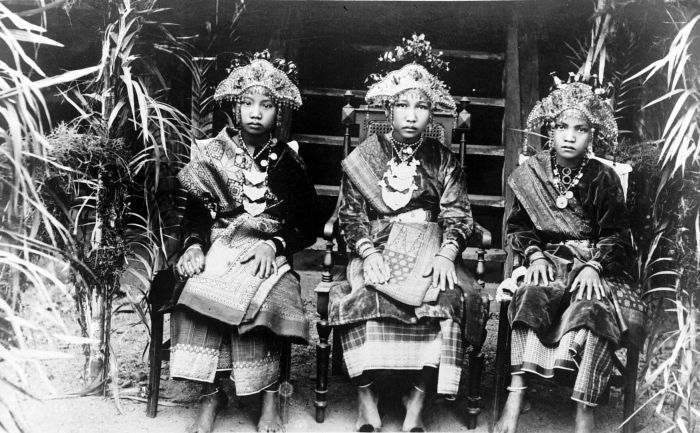|
Komering Script
The Komering script is an abugida which was traditionally used to write the Ilir dialect of the Komering language. It is related to the group of Ulu scripts The Ulu scripts, locally known as ''Surat Ulu'' ('upstream script') are a family of writing systems found in central and south Sumatra, in the regions of Kerinci, Bengkulu, Palembang and Lampung, Indonesia. They were used to write manuscripts .... References External links Brahmic scripts Indonesian scripts {{Brahmic-script-stub ... [...More Info...] [...Related Items...] OR: [Wikipedia] [Google] [Baidu] |
Abugida
An abugida (; from Geʽez: , )sometimes also called alphasyllabary, neosyllabary, or pseudo-alphabetis a segmental Writing systems#Segmental writing system, writing system in which consonant–vowel sequences are written as units; each unit is based on a consonant letter, and vowel notation is secondary, similar to a diacritical mark. This contrasts with a full alphabet, in which vowels have status equal to consonants, and with an abjad, in which vowel marking is absent, Abjad#Impure abjads, partial, or optional – in less formal contexts, all three types of the script may be termed "alphabets". The terms also contrast them with a syllabary, in which a single symbol denotes the combination of one consonant and one vowel. Related concepts were introduced independently in 1948 by James Germain Février (using the term ) and David Diringer (using the term ''semisyllabary''), then in 1959 by Fred Householder (introducing the term ''pseudo-alphabet''). The Ethiopian Semitic langu ... [...More Info...] [...Related Items...] OR: [Wikipedia] [Google] [Baidu] |
Komering Language
Komering is a Lampungic language spoken by the Komering people, an indigenous ethnic group native to Komering regions alongside the Komering River in South Sumatra, Indonesia. Location Komering is spoken in Lampung Province and South Sumatra Province in southern Sumatra, along the Komering River. Classification The Komering language belongs to the Lampungic branch, which is a subgroup within the Austronesian family. Phonology Consonants A voiced fricative also occurs, but only as a result of foreign loanwords. Vowels Vocabulary Examples of basic Komering words:From Walker, 1975, pp. 14-17. Alphabet Currently, Komering uses Latin Latin ( or ) is a classical language belonging to the Italic languages, Italic branch of the Indo-European languages. Latin was originally spoken by the Latins (Italic tribe), Latins in Latium (now known as Lazio), the lower Tiber area aroun ... as the general writing system, but there are also a small number of people ... [...More Info...] [...Related Items...] OR: [Wikipedia] [Google] [Baidu] |
Ulu Scripts
The Ulu scripts, locally known as ''Surat Ulu'' ('upstream script') are a family of writing systems found in central and south Sumatra, in the regions of Kerinci, Bengkulu, Palembang and Lampung, Indonesia. They were used to write manuscripts in Sumatran languages and Malay. The Malay writing was gradually replaced by the Jawi script, a localized version of the Arabic script. Naming The terms "surat" and "ulu" are the origin of the name Surat Ulu. While "ulu" ('upstream') refers to the highland region where the rivers in South Sumatra and Bengkulu originate (the Barisan Mountains), "Surat" refers to the script. The user community first referred to this script family as ''Surat Ulu''. The Rencong script () is another well-known naming system. "Rencong" is thought to be derived from the Old Malay word ''mèncong'', which means oblique or italics. It could also be derived from the word ''runcing'' ('sharp'), as this script family was originally written with a sharp knife tip. ... [...More Info...] [...Related Items...] OR: [Wikipedia] [Google] [Baidu] |
Brahmic Scripts
The Brahmic scripts, also known as Indic scripts, are a family of abugida writing systems. They are used throughout South Asia, Southeast Asia and parts of East Asia. They are descended from the Brahmi script of ancient India and are used by various languages in several language families in South Asia, South, East Asia, East and Southeast Asia: Indo-Aryan languages, Indo-Aryan, Dravidian languages, Dravidian, Tibeto-Burman languages, Tibeto-Burman, Mongolic languages, Mongolic, Austroasiatic languages, Austroasiatic, Austronesian languages, Austronesian, and Tai languages, Tai. They were also the source of the Collation, dictionary order (''gojūon'') of Japanese language, Japanese ''kana''. History Brahmic scripts descended from the Brāhmī script, Brahmi script. Brahmi is clearly attested from the 3rd century BCE during the reign of Ashoka, who used the script Edicts of Ashoka, for imperial edicts. Northern Brahmi gave rise to the Gupta script during the Gupta period, w ... [...More Info...] [...Related Items...] OR: [Wikipedia] [Google] [Baidu] |

